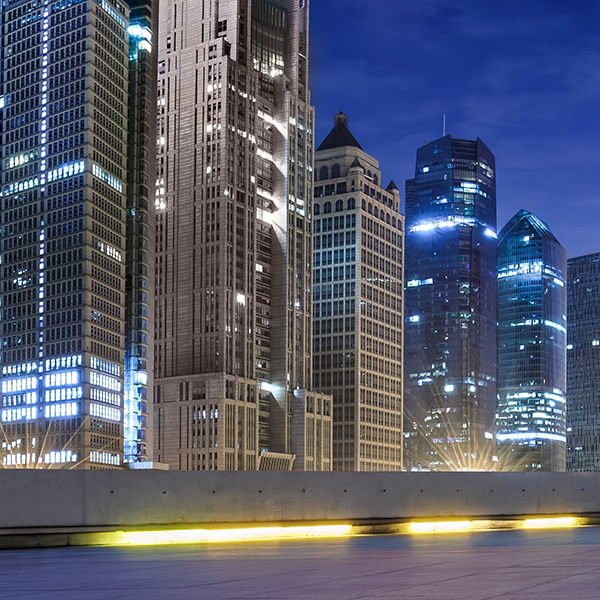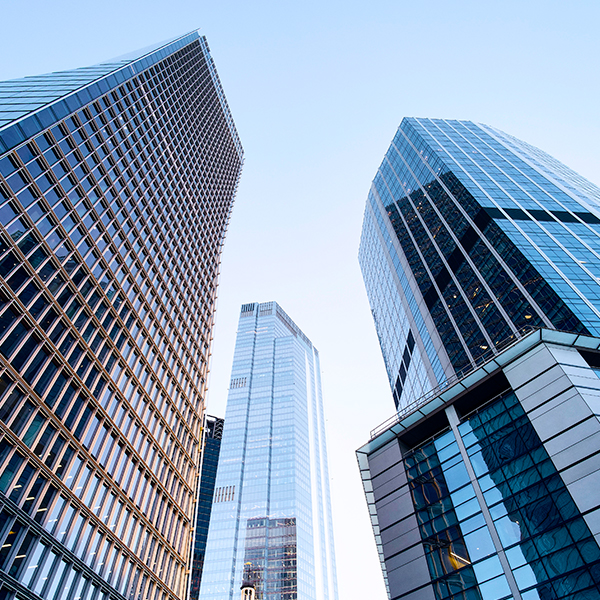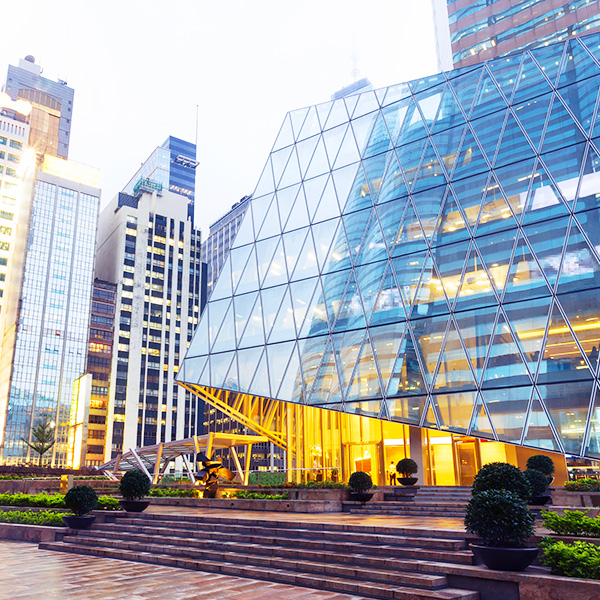

ARTICLE
Three Key Aspects for Future-Ready Commercial Buildings and Parking Facilities
By Jay Williams | January 4, 2024
Read Time: 5 Minutes
Commercial buildings must advance to meet user demands and the growing volume of technology needed to provide state-of-the-art functionality and technological benefits. The commercial building market is growing steadily, along with the size of individual buildings, directly increasing the need for always-on, full-coverage connectivity to service-connected devices and managing energy consumption.
Beyond the commercial building itself, many of the elements of a smart building have now extended to the parking facility. Parking facilities have evolved from simple concrete structures needing only to consider the distance from a building’s entrance to requiring safety, security, access control, sustainable lighting, communications, Internet of Things (IoT) enablement, and electrification for electric vehicle (EV) charging.
We will focus on three elements of the commercial building and associated parking facilities that must be considered to ensure a future-ready, IoT-enabled smart building: sustainability initiatives, infrastructure, and technology. All three elements work together and build upon each other to create smarter outcomes for building owners, occupants, and visitors.
Due to rapidly changing demands around connectivity, data usage, health and safety needs, and concern for Environmental, Social, and Governance (ESG) commitments, commercial building owners must have future-forward sustainability initiatives to meet their customers’ expectations. These initiatives establish sustainable business goals and a plan to achieve them.
Once the sustainability initiatives are set, designing a well-planned infrastructure layer is perhaps the most critical step for a successful, future-ready smart building. The infrastructure in a smart building must be efficient, robust, and reliable to support the technology and applications needed today while ensuring reliable performance and scalability for the digital innovations of tomorrow.
With a future-ready infrastructure layer in place, owners can then implement the technologies and systems on that infrastructure to achieve those sustainability initiatives through improved building efficiency. Although keeping pace with technology and enabling IoT can be challenging, it’s the most effective way to increase a commercial building’s efficiencies while providing occupants with a healthier and safer indoor environment.
Efficiency takes on many forms and functions; it offers cost reduction on utilities, maintenance, operations, and waste management, and it can simplify operational processes and automation to increase productivity and labor savings. Ultimately, these three key aspects lead to greater operational and budgetary efficiencies, which provide greater ROI while improving the built environment to meet and exceed customer expectations.
Technology and Infrastructure
Within the commercial building, technological advances and IoT enablement improve operations of environmental controls, lighting, safety, and security – all with positive implications for sustainability initiatives. The development of the connected ceiling has led to an entire ecosystem directly above our heads that enables lighting, access points, and many devices.
Technology and data drive the need for a more robust and resilient infrastructure with more power, higher bandwidth, and extended distances within buildings and their parking facilities. As IoT increases and more devices are introduced to the commercial building environment, businesses combine disparate building systems into a converged infrastructure. Converged infrastructures work to optimize building systems, operations, and maintenance.
Always-on connectivity is required to provide the benefits of smart buildings and IoT enablement, and without a future-ready infrastructure, a building cannot operate at maximum efficiency.
This makes the relatively small increase in upfront infrastructure investment an obvious decision for building owners. Having an infrastructure capable of supporting these escalating bandwidth needs throughout multiple generations of technology – without having to upgrade the cabling infrastructure in the middle of its lifecycle – provides huge cost savings.
Sustainability
Sustainability is an outcome delivered by the efficiencies from a future-ready infrastructure and new technologies from IoT enablement. But sustainability initiatives are also considered a leading factor to commercial building owners for both the cost-saving benefits and as an environmental necessity.
Sustainability initiatives must be planned to promote a healthier built environment. Still, they also create a positive position for investors, tenants and occupants who emphasize green initiatives. Sustainability initiatives will vary for every commercial building owner and operator. Still, no matter where they are in the sustainability journey, it’s imperative to define sustainability strategies to transition into a truly smart building successfully.
Effective sustainability strategies can generate transformational benefits for commercial building owners and operators by:
- Improving margins by lowering OPEX
- Improving operational performance
- Improving corporate reputation
- Meeting or surpassing regulatory compliance goals
With a growing demand for buildings that can enhance energy efficiencies, improve the occupant experience, and show themselves to be sustainable, there are clear benefits to embracing a smart, future-ready commercial building. But sustainability is more than a buzzword, it’s an opportunity to lower costs, innovate, build more resilient operations, and make a positive impact. From the board room to the plant floor, companies are rethinking how they impact people, society, and the world by achieving sustainability goals.
A Future-Ready Solution
Future readiness may be summed up as the ability to prepare for what could be, without knowing what that might actually be. In the early days of the cellular phone, no one could have dreamed of the vast number of abilities and applications that are now standard. The same is true for commercial buildings. No one could foresee the emergence and demand for healthier indoor environments or a distributed workforce with newly created virtual and on-site collaboration needs. IT/OT convergence, IoT enablement, and digital transformation may be very well in their infancy, with new requirements appearing daily.
The successful deployment of a smart building depends on the elements of infrastructure, technology, and sustainability working together and building upon each other to create smarter outcomes for building owners, occupants, and visitors. Wesco’s Commercial Buildings Technical Application Guide is your roadmap to best practices and smart solutions to deliver future-ready smart buildings for owners and operators.
Get your copy today.

Roadmap to best practices and smart solutions to deliver future-ready smart buildings.

ABOUT THE AUTHOR
Jay Williams
Vice President, Global Network Infrastructure Sales. Jay Williams has over 30 years of network infrastructure sales management and business development experience across multiple vertical markets. With deep industry knowledge and a focus on building strong partnerships, Jay helps integrators and end users effectively deploy future-ready network infrastructure solutions around the globe.

